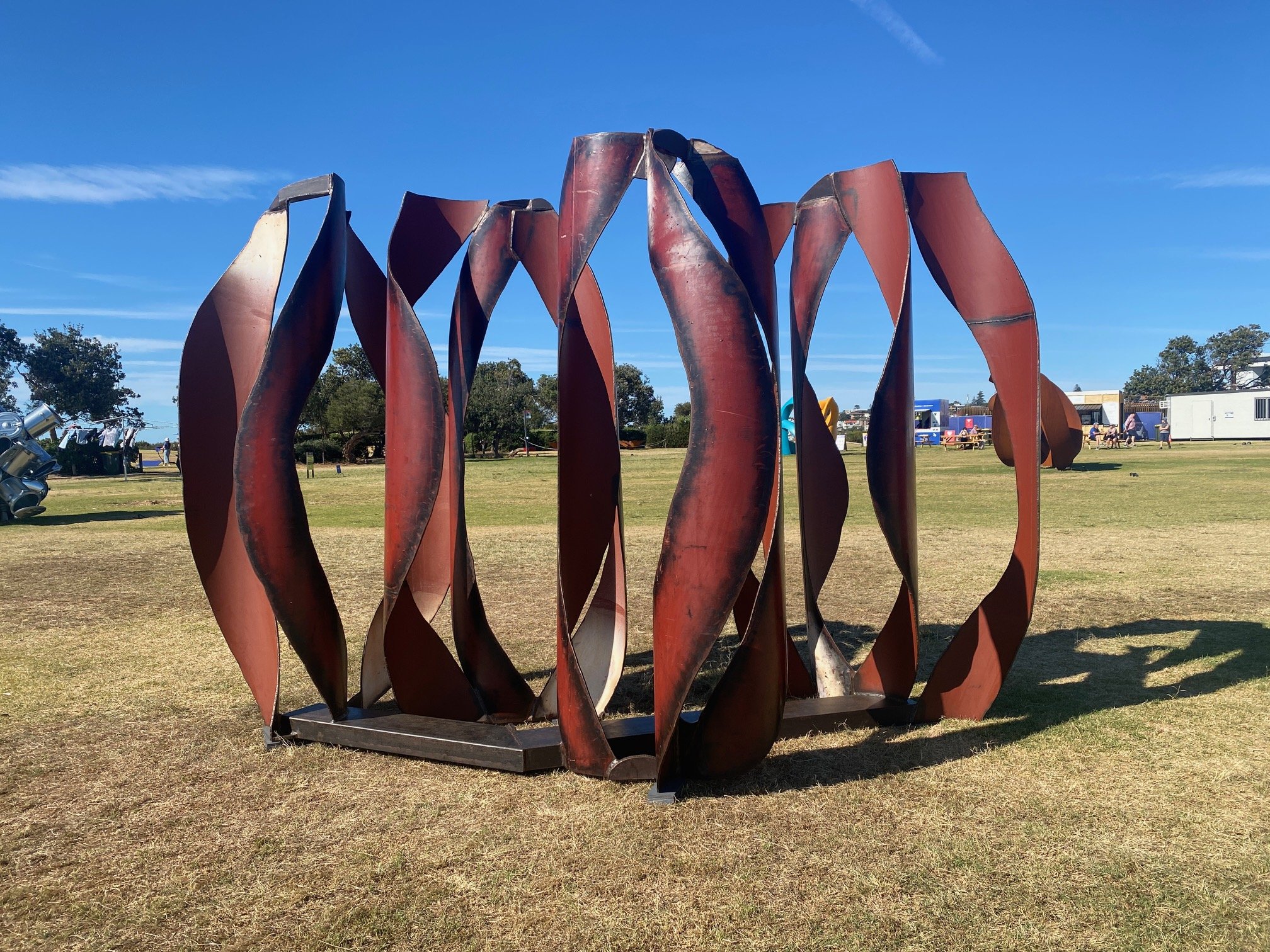We have just passed through a plinth-free phase in history, for sculpture.
It took a thousand years to pull sculpture down off its plinth. With sculpture from the early seventies we saw sculpture come into the world and we could finally enjoy a one to one relationship with it, down on the ground. This was a democracy after all, where we were all ‘equal’.
For fifty years we came to accept this ‘awakening’ as fact. We took it as gospel that sculpture was here among us for good.
Over the years this ‘plinthlessness’ has been accepted and employed as the way to show sculpture at Sculpture by The Sea and elsewhere. If the sculpture needed more than what gravity provided, then the means of support would be disguised, hidden under the ground and covered up with turf to match the turf.
Why is it, that despite this revelation of groundedness that the works often look so ‘footloose’, so unprotected, and unsupported?
Why do the sculptures so often look like imposters into the landscape, however good their features are?
My proposition is that sculpture more often than not, needs a base, a plinth. It needs an architecture to accommodate it. It doesn’t need a roof or walls but mostly it needs a floor, to house it, to separate it from everything else.
Everything needs a frame to be properly demarcated from everything else. To quote Stuart Purves, from Australian Galleries, (where I exhibit), “A sculpture needs to be shown respect and the plinth provides this respect. Without a plinth the sculpture looks ‘plonked’.”
It doesn’t need to be a plinth that a monument had, to raise it above the merely human into the nearly godly realm. The sculpture just needs to own its own space.
‘Plinthlessness’ has aided the exhibition designer, who has not had to integrate the added complexity of placing plinths into their ‘schema’. It may be also that plinths cause budget blowouts.
S’epanouir Linda Bowden
Australiana James Rogers
Linda Bowden’s S’epanouir and James Roger’s Australiana are examples of where a plinth would have improved the legibility of the work. There are at least twelve works in the show where this observation can be applied.
For no other reason we know that the life of the work will be extended fivefold by being separated from the ground. Our eyes know that intuitively.
I mention this now because while it may have been noticed, it hasn’t been noted.

